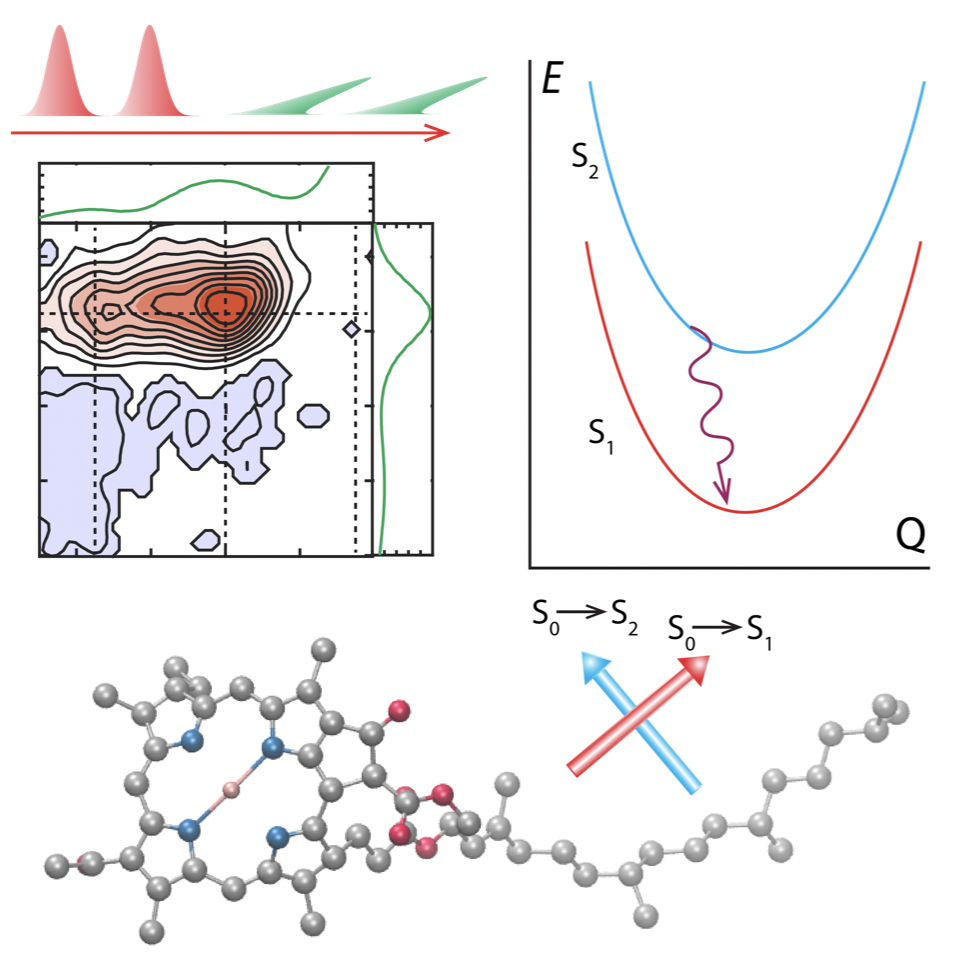Yin Song, Alexander Schubert, Elizabeth Maret, Ryan K. Burdick, Barry D. Dunietz, Eitan Geva and Jennifer P. Ogilvie
Bacteriochlorophyll a (Bchla) and chlorophyll a (Chla) play important dual roles as light- absorbers in photosynthetic antennae and initiators of primary charge-separation in photosynthetic reaction centers. Questions remain about the interplay of electronic and vibrational states within the low energy Q-band and its effect on the photoexcited dynamics. Here we study Bchla and Chla using two-dimensional electronic spectroscopy and state-of-the-art theoretical calculations. The Q-band of Bchla is comprised of two spectrally-separated bands at an angle of 75°. The Q-band of Chla contains two electronic transitions close in energy that are likely mixed via vibronic coupling. The internal conversion rates of Bchla and Chla are found to be 11 ps-1 and 38-50 ps-1, respectively. Our comparative study of these primary pigments highlights the interplay between their electronic structure and resulting photoexcited dynamics and may facilitate a mechanistic understanding of energy conversion in the many natural and artificial photosynthetic systems employing these pigments.
